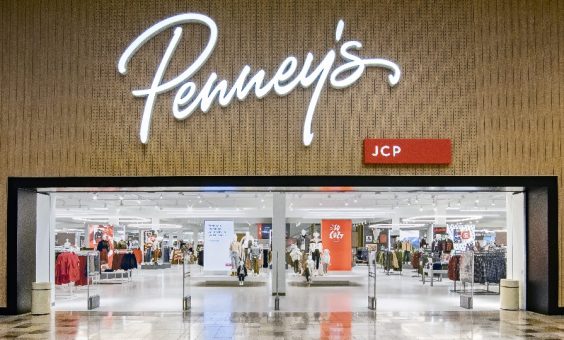
By now, you’ve heard the news that JCPenney has become the latest and largest retailer to file for bankruptcy during the coronavirus pandemic, which has made it impossible for just about anyone to conduct business as usual. But the virus was just the last straw in a cascade of problems, highlighted by a historically horrendous decision involving coupons nearly a decade ago.
In the meantime, shoppers may be wondering whether their local store is going to reopen or close for good, whether there will be any good deals, and whether the company itself will survive.
They’re all questions that will be answered in the coming weeks and months.
JCPenney announced on Friday that it had filed for Chapter 11 bankruptcy protection, as it implements a financial restructuring plan to reduce billions of dollars in debt. Most of its 846 stores remain closed in accordance with local and state guidelines regarding the coronavirus emergency. But permanent store closures are coming. “Stores will close in phases throughout the Chapter 11 process,” JCPenney said, without offering details just yet. “The first phase of closures, including specific store details and timing, will be disclosed in the coming weeks.”
The company says its JCPenney Rewards loyalty program will continue to operate as normal. But in answer to the question, “will JCPenney continue to conduct sales?”, the company offered the vague response that “pricing decisions will continue to be made based on what is in the best interests of the company and our customers.”
Backing away from regular sales, and coupons, is part of what got the company into this whole mess in the first place. Granted, JCPenney was already past its heyday when former Apple executive Ron Johnson became CEO in 2011. He decided to rejuvenate the century-old retailer by making changes that, in retrospect, proved to be disastrous. He remade stores to resemble a series of boutiques featuring hipper merchandise, which only served to alienate JCPenney’s older, target audience, who felt they were no longer wanted. He also banished clearance ranks from stores. But most notably, he did away with coupons and sales altogether.
His “Fair and Square” pricing plan eliminated the age-old practice of marking up prices in order to be able to lower them again with frequent sales and coupons. It made sense, in theory. “I saw weekly events, I saw weekend-only events, daily-only events, in-store events, online only, department specific,” Johnson said. “As a customer you’ve got to be wondering, how do I know when the right time to buy is? It’s pretty confusing.”
Confusing, perhaps, but customers seemed to like it that way, as the perception of getting a good deal was more appealing than simply paying an everyday low price. “Coupons were a drug,” Johnson said in justifying his decision, thereby unflatteringly comparing JCPenney’s core customers to junkies.
When it became clear the changes weren’t working in attracting new customers, and instead were driving old customers away, Johnson came under intense criticism. Perhaps, critics inside and outside the company said, he should have tested such drastic changes before abruptly implementing them across the entire chain? Johnson eventually conceded that eliminating coupons and sales might have been a step too far. “I thought people were just tired of coupons,” he said. “The reality is, there were a certain part of the customers that loved it. I didn’t understand that.”
Johnson’s tenure lasted a year and a half, before he was ousted and replaced by the former CEO whom he himself had replaced. The coupons and sales returned, the boutique concept was abandoned, but the company found itself even more troubled than it was before Johnson tried to rejuvenate the brand. JCPenney made $389 million the year Johnson took over. It hasn’t turned a profit since.
And then the coronavirus pandemic came along. Most retailers have had a tough time, with the economy all but shut down for the past couple of months. But for those that were already in rough shape, it’s been even tougher.
“Until this pandemic struck, we had made significant progress rebuilding our company,” current JCPenney CEO Jill Soltau said in a statement announcing the bankruptcy filing. But “the American retail industry has experienced a profoundly different new reality, requiring JCPenney to make difficult decisions in running our business.”
In addition to closing stores, JCPenney will explore a potential sale of the company. And the possibility of a liquidation and permanent shuttering of the entire chain isn’t off the table. “This company needs to move incredibly quickly through this restructuring. If we don’t, the results could be disastrous,” a company lawyer told the bankruptcy court this weekend.
For now, JCPenney is expressing optimism, at least publicly. “Implementing this financial restructuring plan through a court-supervised process is the best path to ensure that JCPenney will build on its over 100-year history and serve our customers for decades to come,” the company said cheerily.
But the clock is ticking. If you thought no coupons or sales was bad – no JCPenney could be the most unwelcome outcome of all.
Image source: JCPenney











I don’t see how or why it can possibly survive. The blue-hairs who once shopped there are in their downsizing phase, and millennials wouldn’t shop there if everything was free. It’s just too gauche for them.
Malls are dying everywhere with or without JPC. There’s no value in a stand-alone JCP, and it’s too late to gain much from an online presence. There are dozens of others who are going or gone after failing in that space.
The only possible way forward is to do what Sears and KMart did (or, more precisely, Eddie Lampert) — salvage what’s left and run it into the ground. Then slowly dispose of the only thing of value JCP still has — real estate.
In fact, the best way forward it let sell it all to Lampert and let him do the slow, but sure, whittling away.
i worked with them in packaging and saving millions on inbound merchandise but “old school” thinking with no taking risk was not in their thinking. Sad. They had good quality merch but as the mall traffic declined so did sales!
A very good and true article. Plus they could not get their online sales moving.